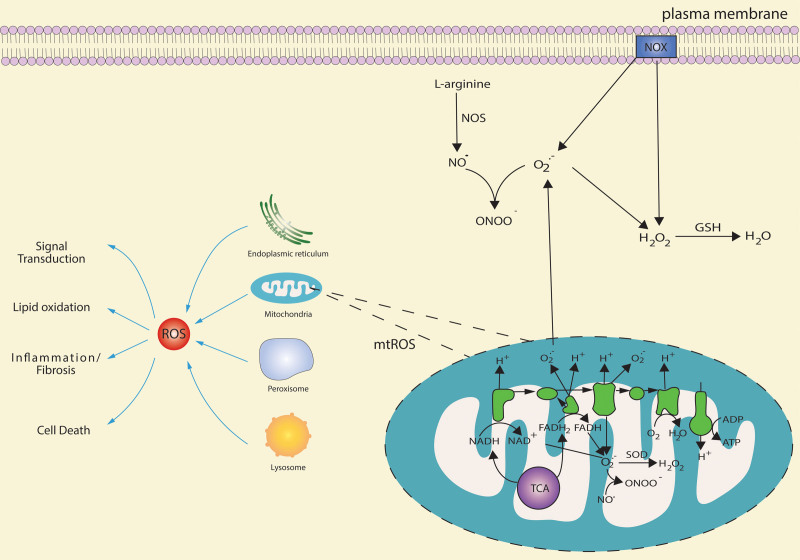Figure 1.
The main intracellular sources of ROS/RNS. Many cell organelles can produce ROS, acting as a signal-transducing molecule. Excessive ROS can induce lipid oxidation, inflammatory responses, fibrosis, or cell death in the liver. The main source of ROS is generated by ETC, NADH, and FADH2 are respectively involved in the TCA cycle, and β-oxidation of fatty acids donates electron and H+ to mitochondrial ETC. With the process of electron transfer from complex I/complex II to complex IV, electrons leak from ETC attack O2, leading to O2− formation. O2− has a short half-life that is rapidly divided into H2O2 and O2 by SOD. NOX is also the main ROS source that transfers an electron to O2 to produce O2− and H2O2. Increasing mtROS activate NOXs, which, in turn, enhances mtROS generation. This feed-forward cycle between NOXs and mitochondria maintains the cellular redox homeostasis. O2− produced by ETC can respond to NO•, which is produced from L-arginine by NOS catalysis to generate ONOO−. Besides, ONOO− can also be produced in mitochondria, which is mainly catalyzed by mtNOS. ETC, electron transport chain; FADH2, flavin adenine dinucleotide; mtNOS, mitochondrial NOS; ONOO−, peroxynitrite; NADH, nicotinamide adenine dinucleotide; NADPH, nicotinamide adenine dinucleotide phosphate; NOXs, NADPH oxidases; RNS, reactive nitrogen species; ROS, reactive oxygen species; SOD, superoxide dismutase; TCA, tricarboxylic acid.

